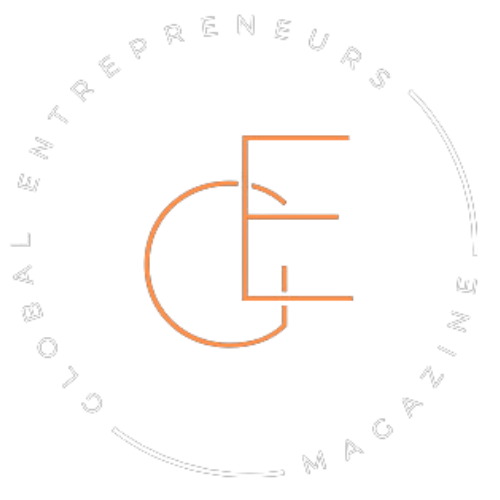Chris didn’t wake up thinking today would be the day he snapped.
But after juggling five client calls, rewriting a landing page, chasing a late invoice, and realizing it was already 10PM and he hadn’t eaten dinner—he hit his limit. He wasn’t burned out because his business was failing. He was burned out because it was working.
The growth was there. The leads were coming in. But he couldn’t keep up. Hiring felt risky. Training a team would take months. And the thought of managing more people? Exhausting.
So he did what most solo founders don’t consider soon enough.
He stopped looking for more hands and started building smarter systems.
Not overnight. Not perfectly. But piece by piece, Chris figured out how to scale his business without throwing people at every problem. And it worked.
If you’re the kind of entrepreneur who’s doing everything yourself—and telling yourself it’s temporary—this isn’t just a story. It’s a signal. You can grow without building a 12-person team. And you don’t have to wait until you’re drowning to do it.
Why hiring isn’t always the answer
Ask most founders how they plan to scale, and the answer comes fast: “I just need to hire.”
It makes sense on the surface. More hands, more progress—right?
That’s what Maya thought, too. Her online store had taken off, and orders were coming in faster than she could fulfill them. So she hired a VA. Then a part-time customer support rep. Then someone to help with social media. Within three months, her Slack was full of questions she didn’t have time to answer.
Her time wasn’t freed up. It was just redirected—from doing the work to explaining the work.
What no one tells you early on is that hiring isn’t just about delegation. It’s about management. Culture. Training. Payroll. And if you’re not ready, it turns into a second full-time job.
Hiring too soon can actually slow you down. Especially if the systems underneath are still duct-taped together.
Sometimes, the better question isn’t who should I hire—but what am I repeating that doesn’t need my brain?
That’s where smart entrepreneurs start to find real breathing room.
The shift: from manual to augmented
Jared used to spend every Monday morning sorting through spreadsheets. Customer feedback, sales data, refund requests—hours gone before noon. He kept telling himself it was just part of running things lean.
Then one day, he fed last month’s data into an AI tool out of curiosity. What came back wasn’t perfect, but it flagged trends he hadn’t noticed. Return rates were spiking in one product category. A campaign he thought had flopped was quietly converting through repeat buyers.
That’s when it clicked.
The work he’d been doing out of habit didn’t actually need him. It needed a system.
He started small—automated summaries of customer reviews, AI-generated insights into ad performance. Then he added an AI assistant to prep his reports and clean his inbox. Tasks that once took days now took minutes. And his focus shifted from sifting through data to acting on it.
Jared didn’t replace his team. He stopped doing tasks that didn’t need a team in the first place.
Where AI quietly saves the day (without sounding robotic)

Monica runs a coaching business. Her calendar used to look like a battlefield—calls squeezed between writing newsletters, following up with leads, answering DMs, and trying to post something halfway decent on Instagram.
She wasn’t trying to go viral. She just needed to stay visible.
It was too much. Until she started offloading the stuff that drained her.
Now her emails get sorted and flagged by priority. Her DMs are pre-filtered through an AI inbox assistant that helps draft replies, so she can approve them with a tap. Her blog posts? They start with voice notes she records in the car—turned into structured drafts by AI and polished up with her final pass.
She still shows up. But the weight of showing up doesn’t crush her anymore.
What makes this work is precision. It’s not about automating everything. It’s about identifying the pieces that eat time but don’t need talent. Things like:
- Sorting through repetitive emails
- Drafting captions or repurposing content
- Generating reports and summaries
- Organizing to-dos based on urgency and category
It’s the invisible stuff—the tasks that don’t look big on a checklist but stack up fast.
And that’s exactly where AI fits best: quietly taking the mental clutter off your plate.
But it’s not about doing everything with AI
Daniel got excited. Too excited.
After seeing a few wins with automating email replies and customer onboarding, he started plugging in AI for everything. Content creation, sales scripts, pitch decks—even personalized video messages. On paper, it looked like he’d built a machine.
In reality, something was off.
The content felt hollow. The sales messages didn’t land. Clients stopped responding with their usual energy. Daniel wasn’t saving time—he was spending it fixing the mess that came from trying to remove himself entirely.
That’s when he realized AI isn’t a replacement for care. Or insight. Or instinct.
It’s a tool, not a strategy.
The smart move isn’t to hand over the wheel. It’s to stop driving with your elbows when you’ve got cruise control. Use AI to handle the rinse-and-repeat work—the parts where your brain adds little value—but keep your fingerprints on the things that matter.
Automation works best when it’s focused, intentional, and tied to your voice. Otherwise, you’re not scaling. You’re scattering.
The real payoff: freedom to grow
Nina used to wake up already behind.
Her mornings started with catching up on client requests from the night before. Her days were packed with calls, revisions, follow-ups, and tiny tasks that chipped away at her focus. And somewhere between the admin chaos, she was supposed to grow her business.
When she started building systems around AI, it didn’t free up all her time. But it gave her back the right hours.
Suddenly, she had mornings to think clearly. Afternoons to plan instead of react. She started reaching out to bigger clients, building partnerships, sketching out a course she’d shelved for over a year.
She didn’t work less. She just worked on the business instead of inside it.
That’s the shift.
Scaling with AI isn’t about sitting on a beach while bots run your company. It’s about breaking out of the weeds so you can make real decisions, set direction, and stay creative.
That kind of freedom? It changes everything.
You’re not cutting corners. You’re cutting through noise.
Some people hear “AI” and think shortcuts. As if using tools to save time means you’re doing less.
But smart entrepreneurs know better.
It’s not about skipping steps. It’s about clearing space. It’s about building momentum without running yourself into the ground. You’re not trading hustle for laziness. You’re trading busywork for progress.
You still make the calls. Still shape the vision. Still bring the magic no tool can replicate.
You just stop spending your best hours writing reminders, digging through inboxes, or formatting spreadsheets.
So if you’re stretched thin, and hiring feels out of reach—or out of sync with where you are—there’s another path.
You don’t need to build an empire of employees to grow like one.
You just need to stop doing everything the hard way.




